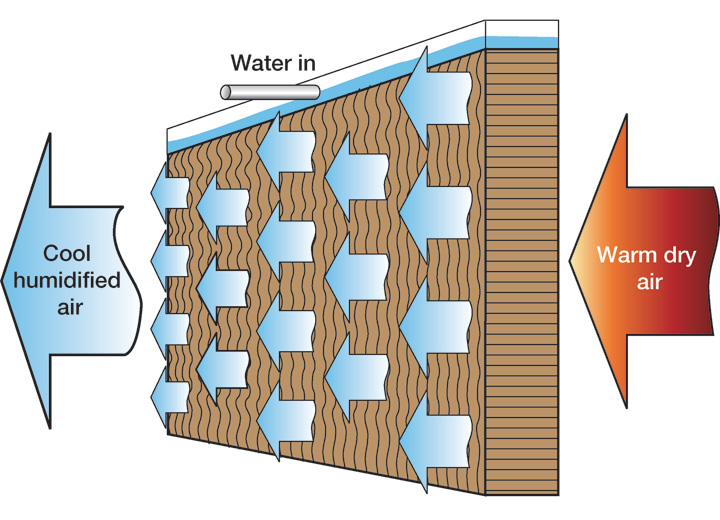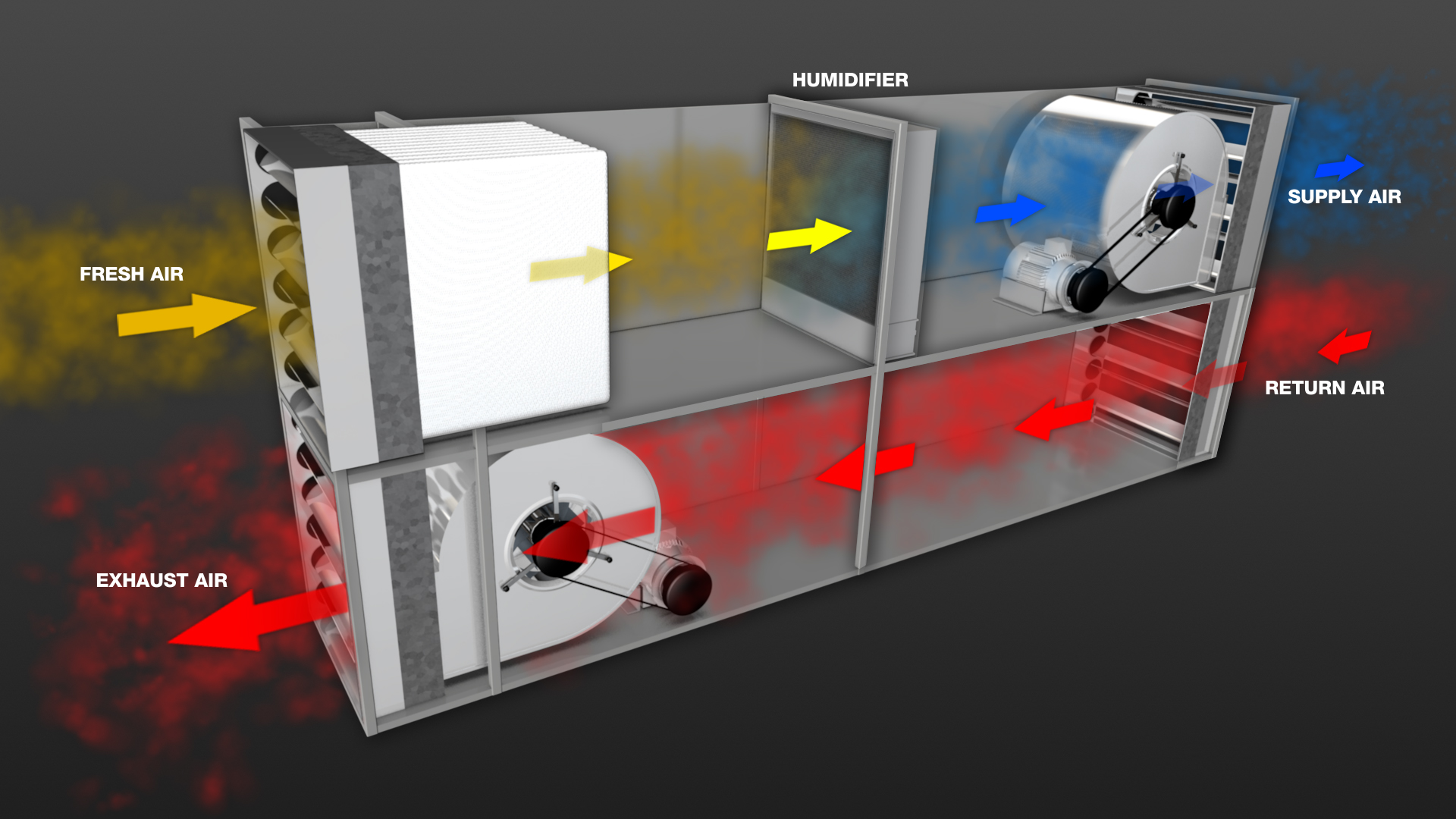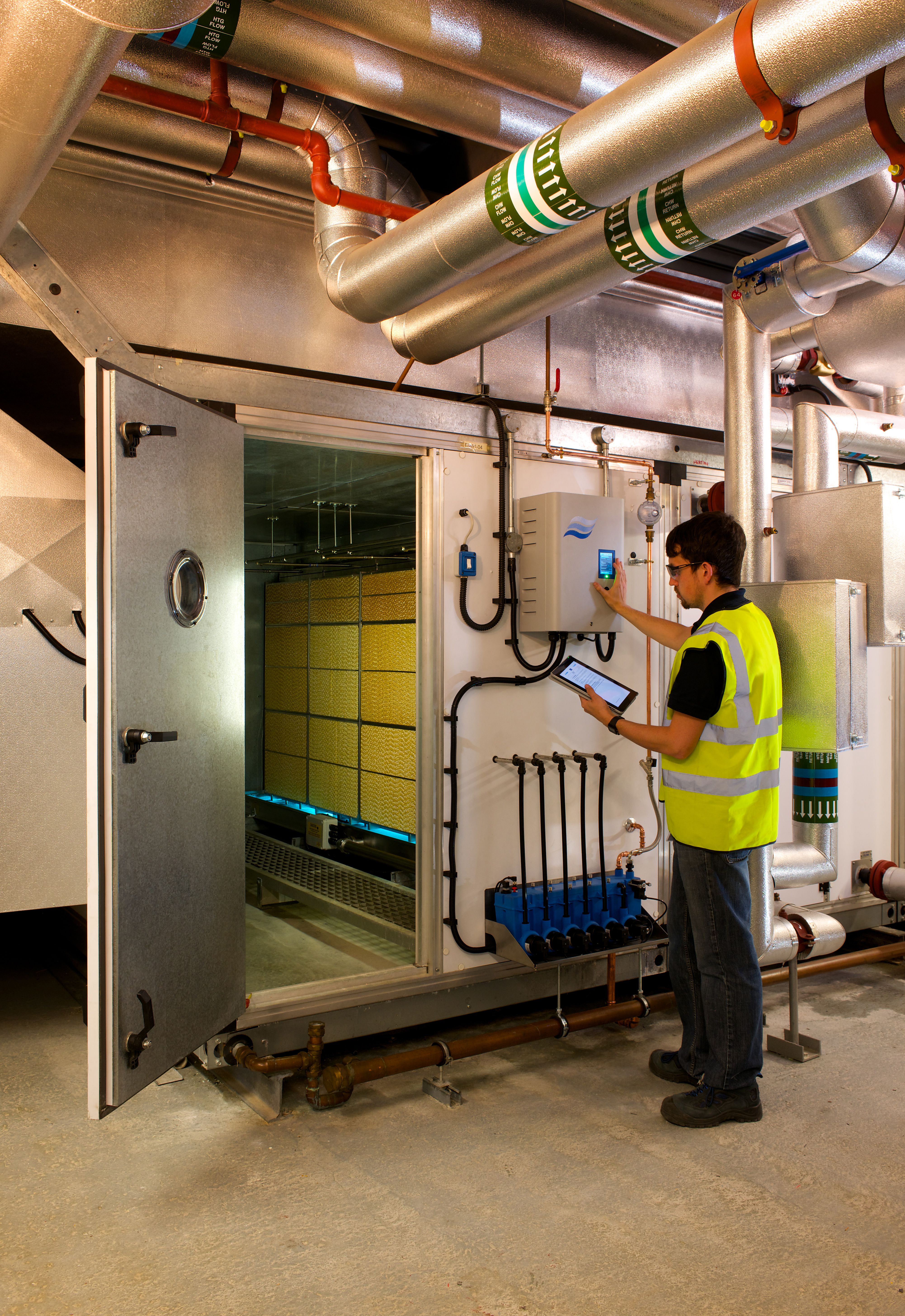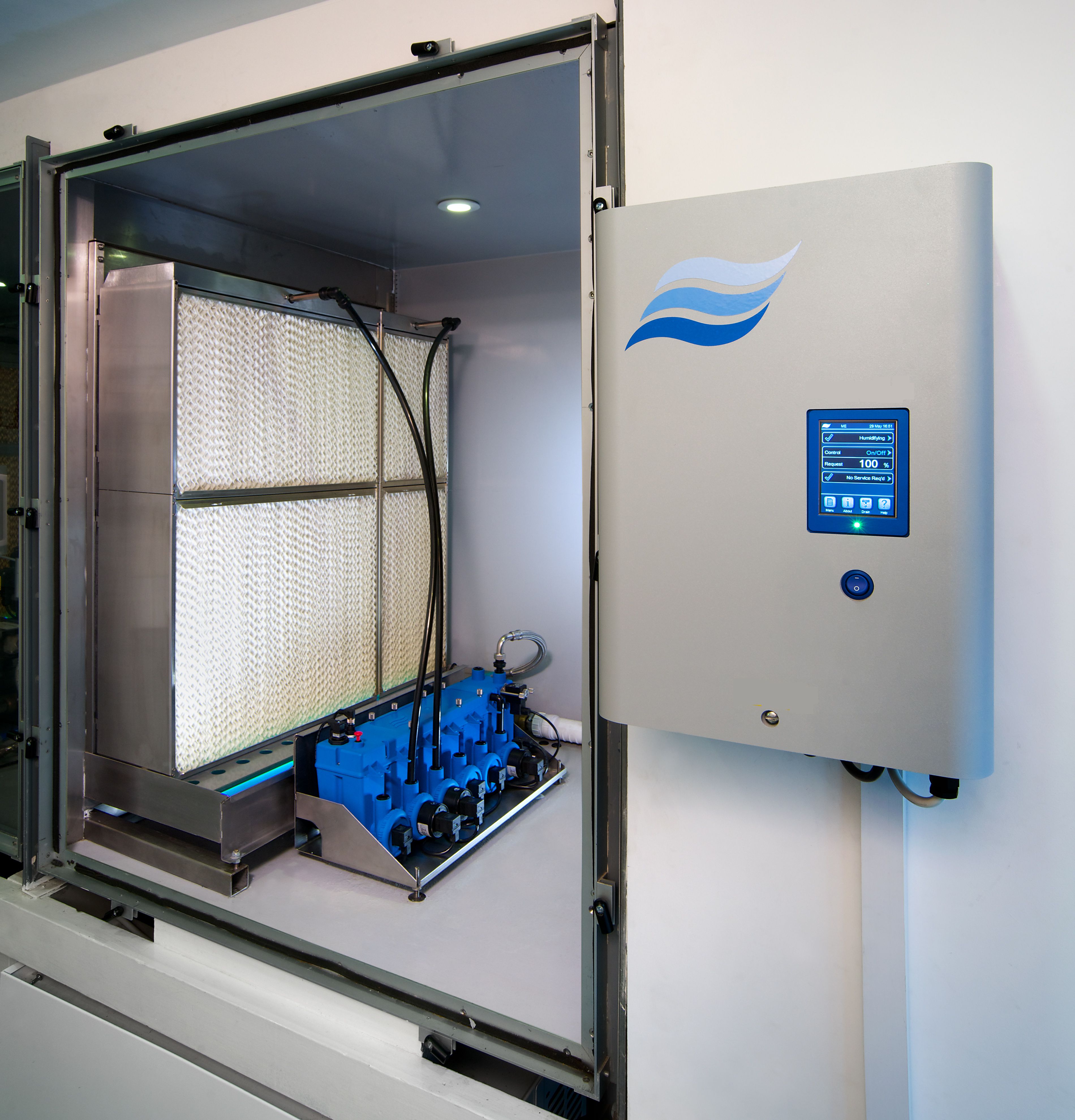
29.01.2018
What is an Evaporative Cooling System?
An evaporative cooler is a system that helps to optimise air moisture as well as temperature. Otherwise known as adiabatic humidification, the process of evaporative cooling involves temperature reduction in water prior to dispersal into the air to provide sufficient relative humidity (RH) control. In turn, this directly affects how dry or moist an environment’s air is. Condair’s adiabatic humidifiers provide not only optimal and consistent humidity control but also comprehensive temperature control as a result of the evaporative cooling technology present in these powerful systems. Here is a closer look at the basic essentials of what an evaporative cooler is, as well as the evaporative cooling process:
Evaporative Humidifier Configurations (Direct and Indirect)
There are two ways to control the temperature of an environment using an evaporative cooling system. The first is known as direct, or in-duct evaporative cooling, which is used on incoming air to ensure that all air filtered into a room is directly cooled using the system. A cool mist humidifier of an indirect nature refers to the connections with exhaust and fresh air with an evaporative humidifier to produce clean air while recovering heat. Regardless, the end result is fresh, clean, and thoroughly filtered air that is also cooler, which helps to reduce internal temperatures so that they may be maintained at consistently acceptable levels. Condair’s evaporative cooling systems incorporate a carefully engineered evaporative media designed with a special corrugated pattern, which provides a large surface area where air and water can interact with one another. These channels allow for air to freely and efficiently flow through the media, all while maximizing evaporative output. The result is far more resilient air cooling that is easier to control.
Wet Bulb and Dry Bulb Temperature
The cooling potential for an environment utilizing an evaporative cooler relies entirely on the wet bulb measurement, which forms the difference between dry bulb temperature and wet bulb temperature. In arid regions, a cool mist humidifier can reduce energy consumption as an alternative to compressor-based cooling. In climates not considered arid, indirect evaporative cooling can still take advantage of the evaporative cooling process without increasing humidity. Passive evaporative cooling strategies offer the same benefits of mechanical evaporative cooling systems without the complexity of equipment and ductwork.
Evaporative Cooling and Relative Humidity (RH)
So, what is an evaporative cooler’s relation to securing proper humidification? Since evaporative cooling relies on water absorption for maximum effect, it will undoubtedly affect the relative humidity (RH) of any space it is filtered into by an evaporative humidifier. This measurement is an essential, accurate reading of the moisture content in an environment’s air. Low relative humidity can produce drier conditions that encourage the spread of airborne-based bacteria and particles. For example, a retirement home with low relative humidity – below 40% RH – will find it more difficult to limit the spread of influenza and other airborne-based infections. Legionnaires disease and other health risks can also pose a serious threat in low-humidity conditions. Maintaining the relative humidity between 40% and 60% RH ensures optimal comfort, health, and wellness of occupants. It also protects various application processes, with everything from printing to musical instrument preservation directly impacted by the amount of moisture in the surrounding air. Evaporative cooling assists with humidity control by regulating the air temperature, which then stabilizes and becomes easy to maintain. An evaporative cooling system draws in air, introduces it to consistent moisturization, and then disperses it directly into a space in either an atomized or lightly sprayed fashion, or alternatively, the evaporation takes place on the pad filter itself without the need for atomization. This cool, moist air will alter the overall relative humidity of the immediate environment, making systems such as Condair humidifiers with built-in evaporative cooling systems a highly efficient way of maintaining room temperature and relative humidity.
Suitable Applications for Evaporative Cooling
Many considering a cool mist humidifier often ask, “What is an evaporative cooler going to do that benefits my business?”
Evaporative cooling systems are often built for higher load capacities to specifically optimize industrial and commercial applications. Specifically, they are best suited to environments where specific air moisture and temperature parameters are required to be regulated, be it for the sake of product or material quality, employee wellness and healthiness, and/or optimized production efficiency. Paint spray facilities, print manufacturers, aerospace vehicle production facilities, offices, and data centers are examples of suitable candidates for this innovative and leading-edge cooling technology.
Cool mist humidifier systems are carefully engineered by Condair in various load capacities to provide efficient, reliable, and thoroughly consistent temperature and relative humidity control. To learn more about our evaporative cooling systems, consult our Best Humidifier Guide or contact us today.
Similar links:
https://www.condair.com/humidifiernews/blog-overview/6-ways-to-use-evaporative-cooling




